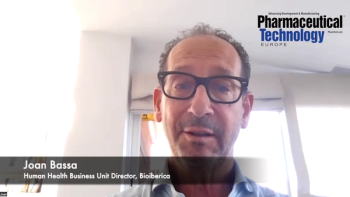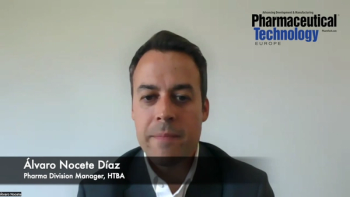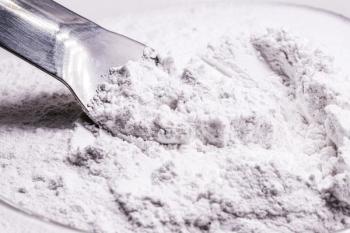
- Pharmaceutical Technology-02-02-2013
- Volume 37
- Issue 2
Gaining Stereoselectivity in Asymmetric Synthesis
Researchers use inorganic catalysts as an alternative to biocatalysts in the selective conversion of sugars to produce chiral building blocks.
Chiral chemistry plays a significant role in the development of pharmaceutical intermediates and APIs, and as such, advances in asymmetric synthesis are of value to pharmaceutical companies. Researchers in academia and industry continue to develop new routes for achieving desired enantioselectivity.
ALFRED PASIEKA/PHOTOLIBRARY/GETTY IMAGES
Evaluating the opportunity
The global market for chiral technology, inclusive of applications in pharmaceuticals, is expected to show moderate growth during the next five years. The global chiral technology market was worth nearly $5.3 billion in 2011, according to a recent analysis by BCC Research. This market is expected to increase at a compound annual growth rate (CAGR) of 6.5% from 2011 to 2016 and will approach $7.2 billion by the end of the forecast period. Chiral-synthesis products accounted for the majority of the chiral technology market in 2010, with an 80.% share (i.e., $3.9 billion in revenues). This market segment was estimated at $4.2 billion in 2011 and is expected to be $5.7 billion by 2016, a five-year CAGR of 6.4%, according to BCC. The chiral analysis market was valued at $785.7 million in 2010 and grew to $839.4 million in 2011. This market is projected to reach nearly $1.1 billion by 2016, a CAGR of 5.8% during the five-year period, according to BCC.
Patricia Van Arnum
Generating sugar epimers
A review of recent literature reveals several interesting approaches in chiral chemistry. One approach involves the synthesis of rare sugars, which have potential in several important applications, including as chiral building blocks in natural-products synthesis. Current production methods, however, use costly and complex biochemical processes to transform easily found abundant sugars into these rare ones. To address this limitation, researchers at the Massachusetts Institute of Technology (MIT) have found a way to use inorganic catalysts in place of enzymes to generate sugar epimers in a simple and robust manner, according to a Oct. 10, 2012 MIT press release.
Typically, biochemical processes used to generate rare sugars from more abundant sugars involve three main classes of enzymes, two of which, isomerases and oxidoreductases, are active on a wide range of simple substrates, but which also can result in the formation of side products. For example, xylose isomerase converts glucose into fructose and simultaneously converts fructose into mannose. These processes have generated some commercially available rare sugars, but the complex nature of that biochemical process makes it costly, according to the MIT release. The third class of enzymes, epimerases, are potentially the most useful biocatalysts for the widespread production of rare sugars because they offer high specificity for products and are capable of selectively modifying sugars at multiple carbon positions. Like all biological catalysts, however, epimerases can be fragile because they require specific reaction conditions and can only act on previously functionalized sugars.
The MIT researchers reported using inorganic catalysts in place of the enzymes to generate sugar epimers, thereby offering an alternative to biocatalysts in the selective conversion of sugars (1). The catalytic system involves using a tin-substituted microporous silicate (Sn-Beta zeolite) combined with a borate salt. The MIT researchers found that Sn-Beta zeolite in the presence of sodium tetraborate catalyzed the selective epimerization of aldoses in aqueous media. The reaction proceeds by way of a 1,2 carbon-shift mechanism, whereby C–C bonds move within the molecule's backbone, according to the MIT release.
Other advances in chiral chemistry
Researchers at the Department of Applied Chemistry, the Faculty of Science, at the Tokyo University of Science and the Japanese Foundation Center for Cancer Research developed a method for the total synthesis of AMF-26, an antitumor agent that disrputs the Golgi system by inhibiting ADP-ribosylation factor 1 activation (2). A key part of the synthesis was the construction of the chiral linear precursor by the asymmetric aldol reaction followed by a computer-assisted predictive stereoselective intramolecular Diels–Alder reaction (2).
Researchers also recently reported on what they classified as the first organocatalytic asymmetric synthesis of 3,3-disubstituted oxindoles featuring two heteroatoms at the C3 position by employing the highly enantioselective amination of 3-arylthiooxindoles or 3-alkoxyoxindoles using DBAD (3). The work showed that 3-thiooxindoles and 3-alkoxyoxindoles were reactive nucleophiles for the development of catalytic asymmetric reactions (3). In other news, researchers describe their work involving a catalytic asymmetric double (1,3)-dipolar cycloaddition reaction. They reported that by using a chiral silver catalyst, enantioenriched pyrrolizidines can be prepared in one flask from inexpensive, commercially available starting materials. The pyrrolizidine products contain a variety of substitution patterns and as many as six stereogenic centers (4).
In the area of biocatalysis, researchers at the School of Chemical and Biomolecular Engineering, Georgia Institute of Technology, Petit Institute of Bioengineering and Bioscience and Merck & Co., successfully altered a leucine dehydrogenase through several rounds of protein engineering to an enantioselective amine dehydrogenase (5). Instead of the wild-type a-keto acid, the new amine dehydrogenase accepts the analogous ketone, methyl isobutyl ketone, which corresponds to exchange of the carboxy group by a methyl group to produce chiral (R)-1,3-dimethylbutylamine (5).
Other catalytic approaches
In synthesizing pharmaceutical intermediates or APIs, broad advances in catalysis can be helpful. The research group of Professor Petri Pihko at the Department of Chemistry and the NanoScience Center of the University of Jyväskylä at the Academy of Finland recently resolved two problems in chemical catalysis, according to a Dec. 20, 2012 press release.
Antibody drug conjugates remain a niche, but strong area of investment.
In the first project, the researchers designed an intramolecularly assisted catalyst for the synthesis of beta-amino acids. Previously published catalysts work only with aromatic side chains in the imines, but the new catalyst designed at the University of Jyväskylä does not have this limitation, according to the release. The method may be applied in the synthesis of beta-amino acids, which are important building blocks. For the understanding of the catalytic mechanism and design of the catalyst, the researchers collaborated with the research groups of Professor Imre Pápai at the Hungarian Academy of Sciences for computational studies, and Academy Professor Kari Rissanen at the University of Jyväskylä for X-ray characterization of catalysts.
In a second project, the researchers identified new mechanism for the amine-catalyzed Michael addition reaction between aldehydes and nitroalkenes. The new model proposed by the Pihko and Pápai groups includes a new species, a six-membered ring, as the key on-cycle intermediate that is protonated in the rate-determining step. The work is a combination of computational and experimental studies that complement each other in understanding the reaction mechanism. Specifically, the researchers used dihydrooxazine oxides, which are stable intermediates that are protonated directly, without the intermediacy of the zwitterions, in organocatalytic Michael additions of aldehydes and nitroalkenes. Protonation of these species explains the role of the acid co-catalyst in these reactions, and the observed stereochemistry when the reaction is conducted with a-alkylnitroalkenes (6).
BINOL and its derivatives are widely used classes of ligands in asymmetric synthesis, such as in Diels–Alder reactions, carbonyl addition, and reductions (7). Researchers at the University of Texas, Austin have developed a bifunctional catalyst derived from BINOL for producing highly enantioselective bromolactonizations of unsaturated carboxylic acids (8, 9). Specifically, the catalyst promoted highly enantioselective bromolactonizations of 4- and 5-aryl-4-pentenoic acids, but it also catalyzed the highly enantioselective bromolactonizations of 5-alkyl-4(Z)-pentenoic acids. The researchers assert that these reactions represent the first catalytic bromolactonizations of alkyl-substituted olefinic acids that proceeded by means of 5-exo mode cyclizations to give lactones in which new carbon–bromine bonds are formed at a stereogenic center with high enantioselectivity. The researchers also reported on what they say is the first catalytic desymmetrization of a prochiral dienoic acid by enantioselective bromolactonization (8, 9).
References
1. Y. Román-Leshkov, "Sn-Beta Zeolites with Borate Salts Catalyze the Epimerization of Carbohydrates via an Intramolecular Carbon Shift," Nature Comnun., online, DOI:10.1038/ncomms2122, Oct. 9, 2012.
2. I. Shiina, J. Med Chem. 56 (1), 150–159 (2013).
3. J. Zhou, "Organocatalytic Asymmetric Synthesis of 3,3-Disubstituted Oxindoles Featuring Two Heteroatoms at C3 position," Chem. Commun., online, DOI: 10.1039/C3CC38819K, Jan. 23, 2013.
4. A.D. Lim, J.A. Codelli, and S.E. Reisman, "Catalytic Asymmetric Synthesis of Highly Substituted Pyrrolizidines," Chem. Sci., online, DOI: 10.1039/C2SC21617E, Nov. 13, 2012.
5. M.J. Abrahamson, Angew. Chem., Int. Ed. Engl., 51 (16), 3969–3972 (2012).
6. G. Sahoo, Angew. Chem., Int. Ed. Engl. 51 (52), 13144–13148 (2012).
7. W. Sommer and D. Weibel, Aldrich ChemFiles 8.2 (56) (2008).
8. D.H. Paull, J. Am. Chem. Soc., 134 (27), 11128–11131 (2012).
9. C. Drahl, Chem. & Eng. News90 (28), 29 (2012).
Patricia Van Arnum is executive editor of Pharmaceutical Technology, 485 Route One South, Bldg F, First Floor, Iselin, NJ 08830 tel. 732.346.3072,
Articles in this issue
almost 13 years ago
Q&A With Chris Eclesalmost 13 years ago
Seeking Cold Chain Efficiencyalmost 13 years ago
The EU's Falsified Medicines Directive and APIsalmost 13 years ago
End of the Dedicated CMO?almost 13 years ago
Offering a Pharma View of Social Mediaalmost 13 years ago
Tracking Growth in Biologicsalmost 13 years ago
Report from Indiaalmost 13 years ago
Rouge Contaminants and Water Systemsalmost 13 years ago
Pharma Conversation & Communityalmost 13 years ago
GMP Compliance Becomes Prominent Enforcement IssueNewsletter
Get the essential updates shaping the future of pharma manufacturing and compliance—subscribe today to Pharmaceutical Technology and never miss a breakthrough.



